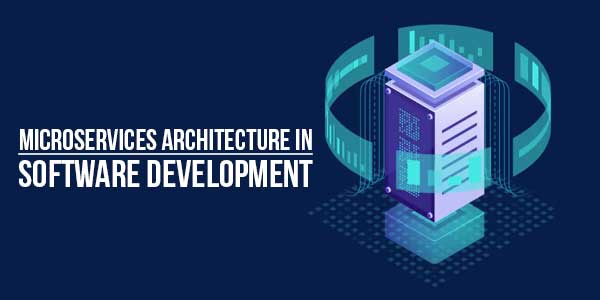
Microservices refers to a unique architecture followed by software development companies to develop systems that try to focus on creating a single functional module with appropriate interfaces and operations.
As a development framework, microservices are very loosely coupled; therefore, a single command update will not break the entire application. This allows all teams to quickly create the relevant components.
Microservices have grown in popularity as companies move toward continuous testing and DevOps. The microservices industry is projected to expand significantly, with growth from USD 683.2 million in 2018 to USD 1,880 million in 2023 at a Compound Annual Growth Rate (CAGR) of 22.4%.
Microservices are highly maintainable and testable. Thanks to their loose coupling, they can also be implemented independently to organize the company’s capabilities.
This blog will reveal more facts about microservices and explain why they are important for companies developing enterprise software.
Table of Contents
Microservices In Software Development: A Way To Build Applications:
The approach to building applications in a microservice architecture is distinct from traditional software development. Each part of it is called a service, so it can be built and installed in silos. Accordingly, each feature can also be updated without affecting the other.
Moreover, it helps you understand the technical aspects of DevOps and makes consistent iteration and delivery (CI/CD) smoother and more achievable.
A microservice refers to the core functionality of an application that runs independently of other services.
Also, microservices architecture is about reorganizing development teams and service communication to prepare for inevitable failures, future scalability, and integrating new features.
What Are The Characteristics Of Microservices Architecture?
1.) Various Ingredients:
- Microservices can be divided into different types of software development services. This allows services to be deployed independently without compromising application integrity. It also allows you to stop just one service instead of reinstalling the entire application.
- The downsides of this approach are that it involves expensive remoting, crude remoting APIs, and more complexity in redistributing responsibilities between components.
2.) Build For Business:
- Microservices in software development are tied to business needs and priorities. In contrast to traditional monolithic approaches, it concentrates solely on individual services like user interface, database, and more.
- Each team is tasked with the responsibility of building a specific product or service by leveraging individual services.
- Moreover, they communicate seamlessly through a message bus, ensuring efficient collaboration and coordination.
3.) Simple Routing:
- In a sense, microservices act like UNIX systems. They receive requests, process them and generate responses accordingly. This is different from other products that rarely work.
- This is where high-tech systems are used to route messages, orchestrate and apply business rules. Microservices have endpoints that help process information and application logic, as well as “dumb pipes” through which information can flow.
4.) Decentralization:
- Since microservices span multiple technologies, an old-school approach in a centralized management system may be more optimal.
- Software development solution services are suitable for microservices because they work on a decentralized management model, hence its decentralized management.
As with decentralized management, microservices architectures focus on decentralized data management. In contrast, a monolithic system uses a single database across multiple applications. In microservices, each service typically manages its own unique database.

What Are The Advantages Of Microservices In Software Development?
1.) Faster Development:
- One of the most notable advantages of microservices is that it empowers global custom software development companies to develop and deploy tailor-made applications swiftly.
- A microservices approach helps shorten the development cycle. Also, microservices architecture follows agile implementation principles and is updated in different phases.
2.) Resilient:
- Independent development of services ensures that they do not interfere with each other if they are designed correctly. So even if the service fails sometimes, the entire application will not crash as a monolithic application.
- A microservice enables you to develop flexible applications for software development projects. Moreover, microservice frameworks facilitate the development of independent services without interfering with other services.
3.) Easy To Implement:
- Microservices applications are actually modular and it is smaller than the traditional monolithic applications. It helps to solve the implementation problems.
- Additionally, the service network layer can assist in better-coordinating microservices, which has its benefits.
- Microservices can simplify integration and automate deployment by utilizing open-source integration tools such as Jenkins, Hudson, and others.
What Are The Cons Of Using Microservices In Software Development?
1.) Greater Complexity:
- Microservices are extremely complex. Complexity is a significant issue for businesses that are not microservices-friendly.
- Similarly, because microservices are divided into multiple independent services, inexperienced software development providers may require assistance in locating them.
2. Rise in Network traffic:
- Microservices are intended to be self-contained and communicate with one another via the network. Unfortunately, this increases network latency, resulting in slower response times and traffic spikes.
- When multiple services are attempting to communicate with one another, it is also difficult to track errors.
3. Trust In Devops:
- Microservices can be used more effectively by software development companies with a strong DeOps team. This is because DevOps is in charge of microservice deployment and management.
- As a result, without a good DevOps team, managing and deploying microservices-based applications is difficult.
What Are Some Popular Examples/Use Cases Of Microservices?
Microservices are cross-domain in nature, and they may be utilized to boost the effectiveness and efficiency of a wide range of enterprise applications. Some of them are shown below:
- Batch processing: Microservices can also be used for batch processing, which combines numerous activities and processes them as a single unit. Recent research also suggests that batch-processing microservices enhance efficiency as well as performance.
- Data analysis: The first step in data analysis is gathering raw data from diverse sources. The necessary information is then derived after extensive data analysis. Similarly to this, we may collect data from many sources using microservices, then analyze it using AI/ML tools.
- IoT Applications: Applications for the Internet of Things are becoming more and more common in numerous industries. For instance, it is widely utilized in organizations that use sensors and IoT devices in manufacturing, logistics, and utilities.
Final Thoughts
Today, businesses can quickly develop and deploy business applications using a microservices architecture. Furthermore, when compared to monolithic applications, it provides greater flexibility in manufacturing applications. Microservices have been shown to help simplify software development solutions.
As a result, there is a high demand for software development services in the UK. Moreover, many businesses are embracing microservices architectures, which they believe are critical for developing utility applications.

 About the Author:
About the Author:
















Microservices refers to a unique architecture followed by software development companies to develop systems that try to focus on creating a single functional module with appropriate interfaces and operations.
Welcome here and thanks for reading our article and sharing your view. This will be very helpful to us to let us motivate to provide you with more awesome and valuable content from a different mind. Thanks again.